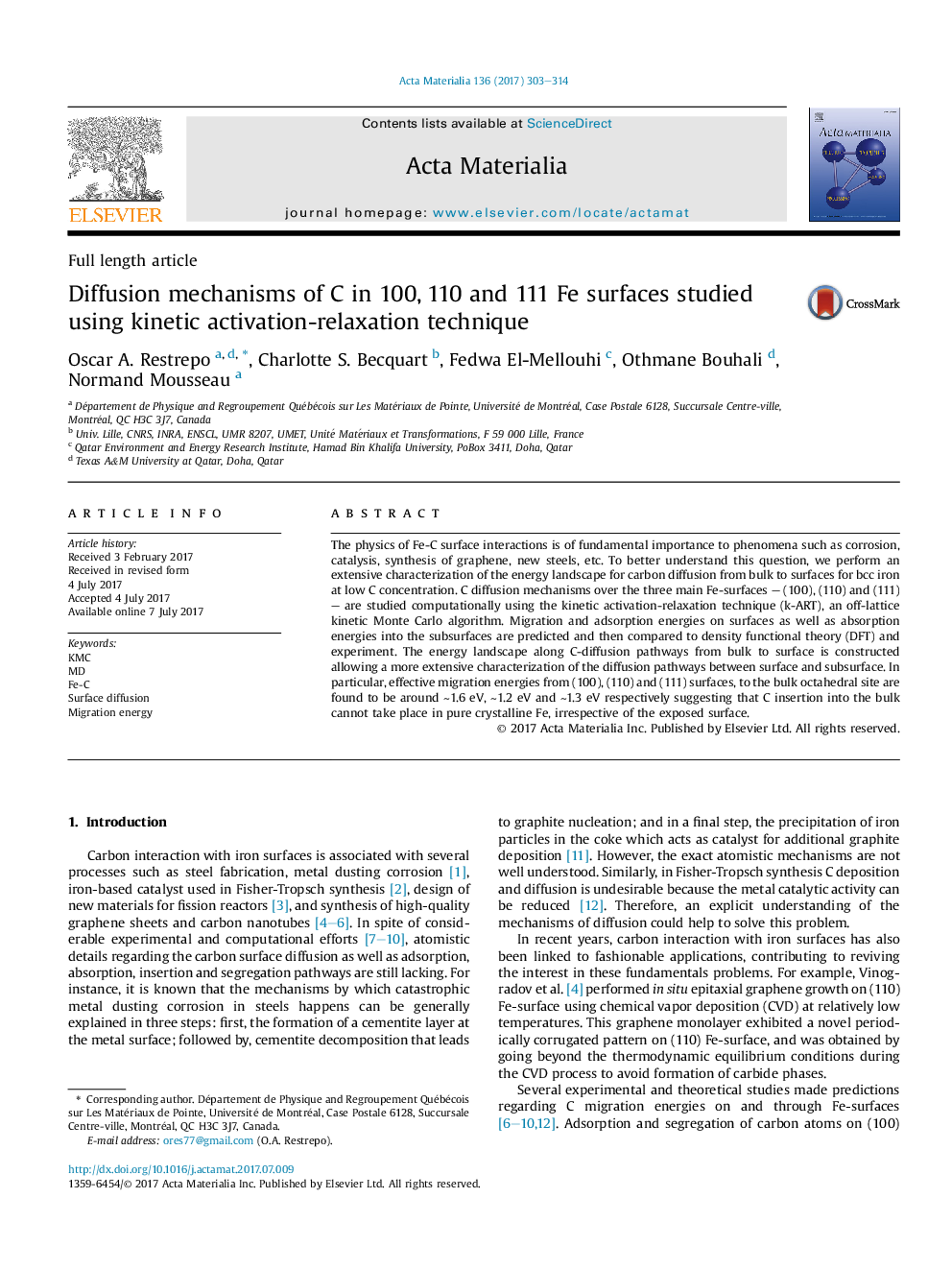| Article ID | Journal | Published Year | Pages | File Type |
|---|---|---|---|---|
| 5436123 | Acta Materialia | 2017 | 12 Pages |
The physics of Fe-C surface interactions is of fundamental importance to phenomena such as corrosion, catalysis, synthesis of graphene, new steels, etc. To better understand this question, we perform an extensive characterization of the energy landscape for carbon diffusion from bulk to surfaces for bcc iron at low C concentration. C diffusion mechanisms over the three main Fe-surfaces - (100), (110) and (111) - are studied computationally using the kinetic activation-relaxation technique (k-ART), an off-lattice kinetic Monte Carlo algorithm. Migration and adsorption energies on surfaces as well as absorption energies into the subsurfaces are predicted and then compared to density functional theory (DFT) and experiment. The energy landscape along C-diffusion pathways from bulk to surface is constructed allowing a more extensive characterization of the diffusion pathways between surface and subsurface. In particular, effective migration energies from (100), (110) and (111) surfaces, to the bulk octahedral site are found to be around â¼1.6Â eV, â¼1.2Â eV and â¼1.3Â eV respectively suggesting that C insertion into the bulk cannot take place in pure crystalline Fe, irrespective of the exposed surface.
Graphical abstractDownload high-res image (225KB)Download full-size image
